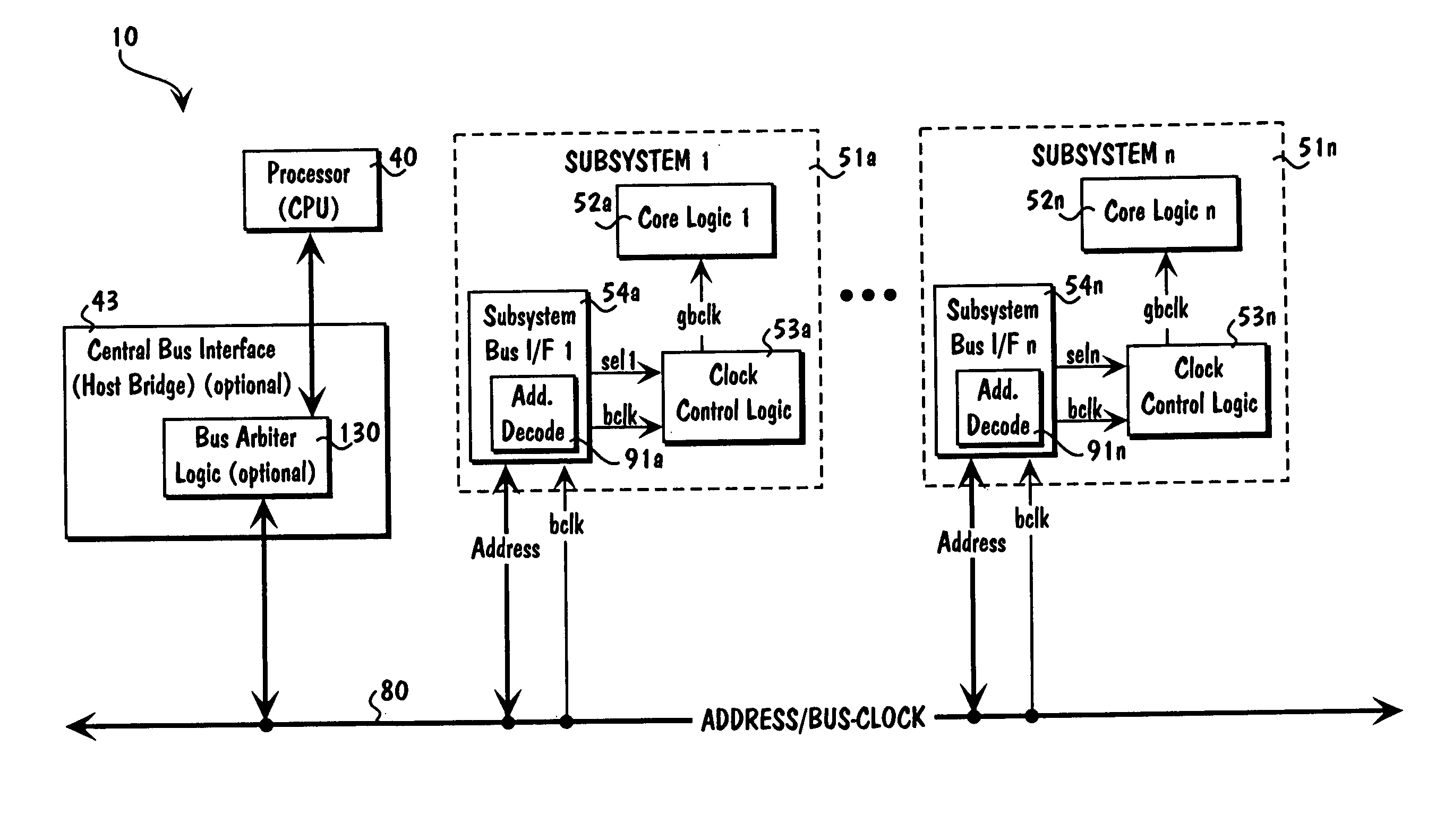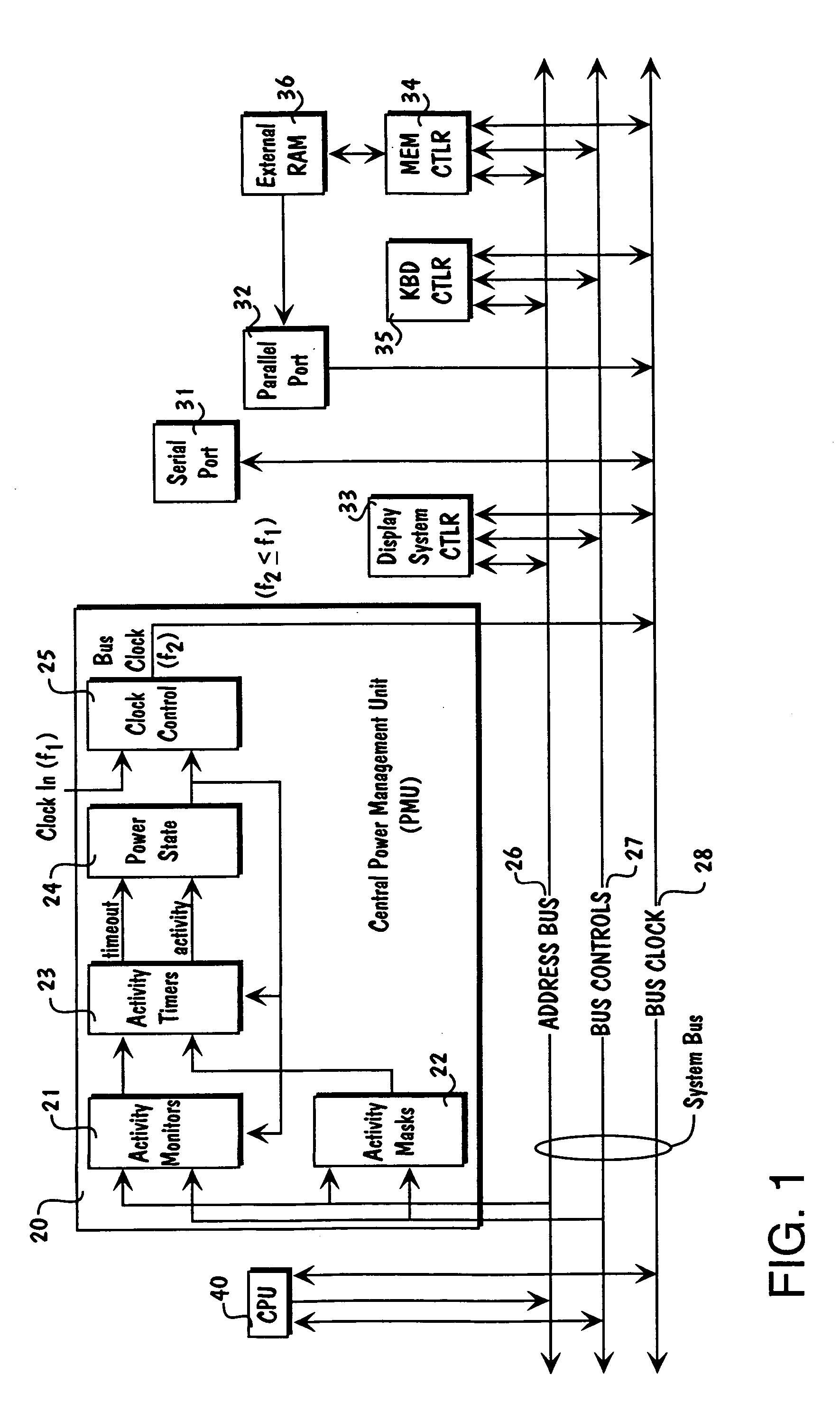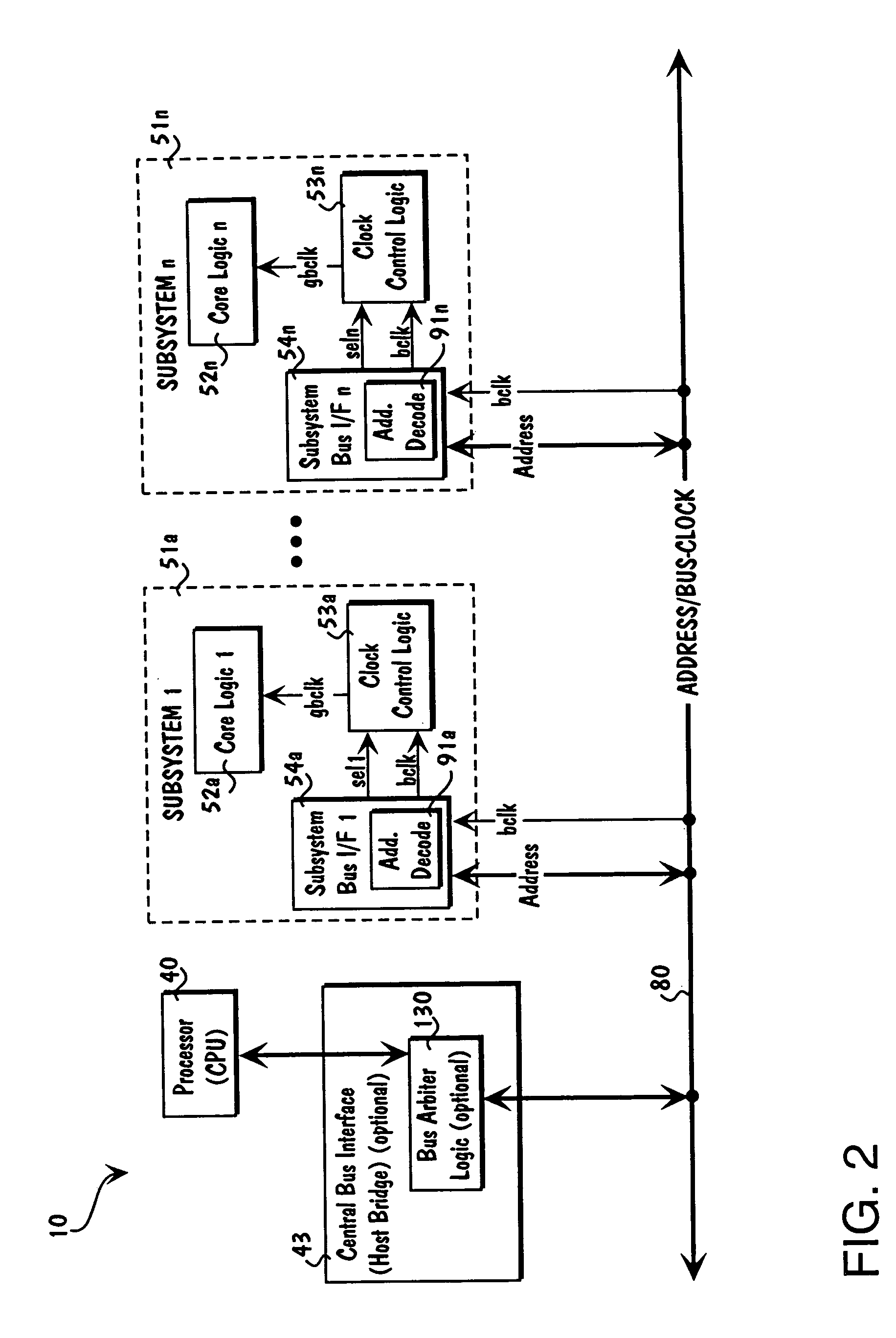Method for modular design of a computer system-on-a-chip
a computer system and modular design technology, applied in the field of computer system power management, can solve the problems of large power consumption, large size and capacity, and unnecessary waiting of the computer system, so as to reduce power consumption in the computer system, minimize power consumption, and reduce the effect of computer performan
- Summary
- Abstract
- Description
- Claims
- Application Information
AI Technical Summary
Benefits of technology
Problems solved by technology
Method used
Image
Examples
Embodiment Construction
[0068]The inventive distributed power management system (DPMS) and method (DPMM) is now described with respect to the exemplary implementation of a computer system 10 in FIG. 2. A host processor, microprocessor, or central processing unit (CPU) 40 (such as made by Intel, Advanced Micro Devices, Cyrix, Motorola, Apple Computer, for example) is coupled to the other system components via central or main system bus 80 which propagates control and data signals including bus clock signals (bclk) and address signals (add). An optional host CPU-to-central bus interface 43 (referred to as a host bridge) may also be provided to accept signals from CPU 40 over a host bus 41, and translate, reformat, adjust timing, or the like processing of these signals, prior to placing them on the system bus 80 (See FIG. 3 for additional details). Such bus interface 43 may optionally but advantageously be provided as a bridge circuit so that CPU 40 may be modified or replaced by alternative designs without r...
PUM
 Login to View More
Login to View More Abstract
Description
Claims
Application Information
 Login to View More
Login to View More - R&D
- Intellectual Property
- Life Sciences
- Materials
- Tech Scout
- Unparalleled Data Quality
- Higher Quality Content
- 60% Fewer Hallucinations
Browse by: Latest US Patents, China's latest patents, Technical Efficacy Thesaurus, Application Domain, Technology Topic, Popular Technical Reports.
© 2025 PatSnap. All rights reserved.Legal|Privacy policy|Modern Slavery Act Transparency Statement|Sitemap|About US| Contact US: help@patsnap.com



